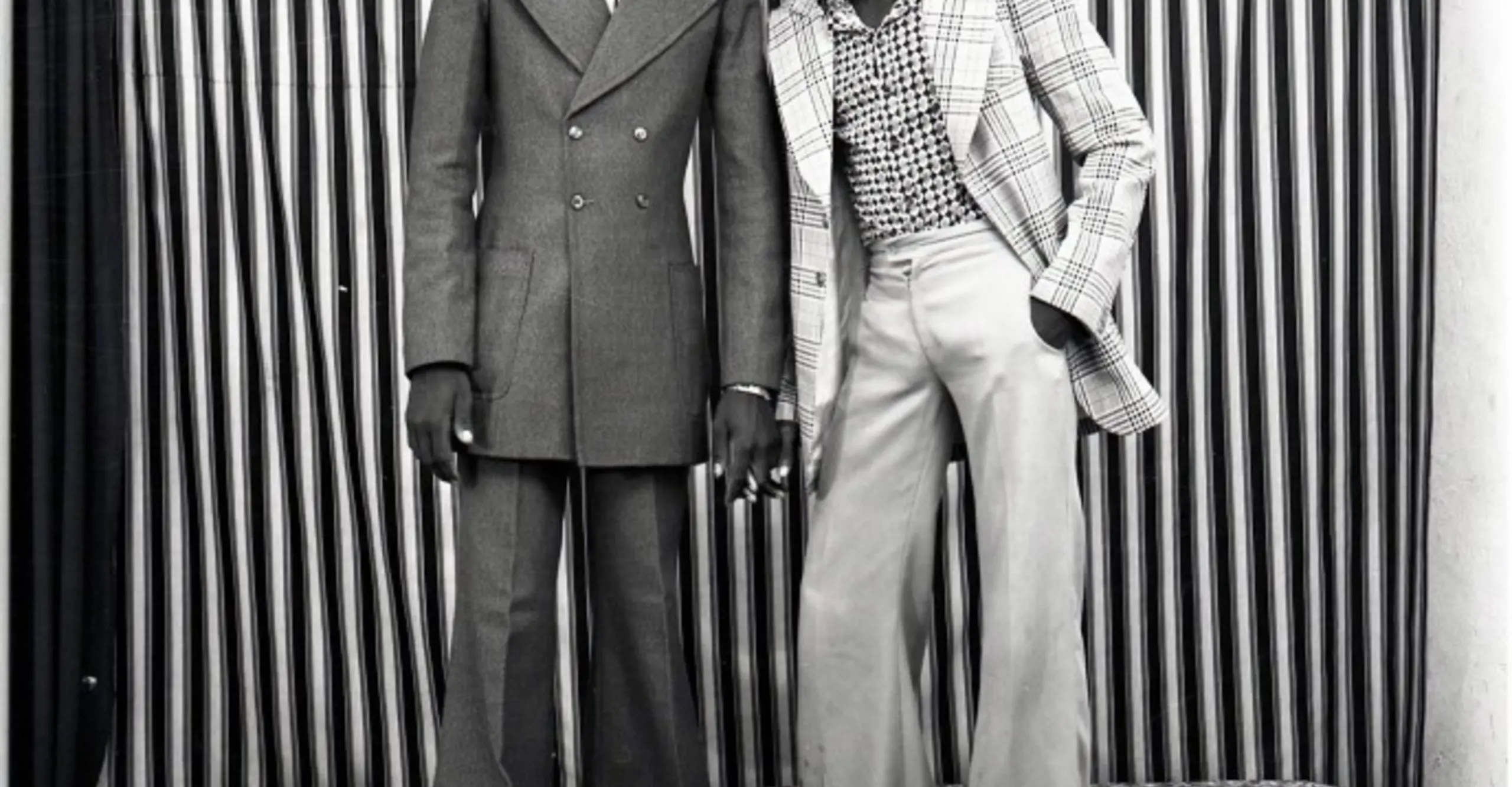Up until this golden age of photography, Africa’s European-run studios were focused solely on selling a fetishised image of “exotic Africa” to the rest of the world, instead of truly capturing the culture. Following WWII and decolonisation, African photographers were able to capture a liberated people full of pride and optimism.
Many of the works are portraits from the well-known photography studios of the time – notably, Malick Sidibé’s in Mali and Lagos’ Studio Paramount – alongside work by fellow Malian legend Seydou Keïta and mojos Mama Casset and Jean Depara, who recorded the glitzy nightlife of Dakar in Senegal and Congo’s capital Kinshasa. Several of the negatives have been lost, which means the original photographs are exhibited, complete with frayed folds, scrawled inscriptions and dog-eared borders.
These idiosyncrasies and laid-bare flaws of the actual objects – albeit a natural result of time – together with the relaxed and candid manner of the photographs’ subjects create a sense of irreverence towards the strict and formal nature of photography. This is because early studio photography was a pretty contrived and orchestrated act requiring a pristine set, a subject staying unnaturally still, a convoluted scientific method; all for a small, square piece of flat, emotionless paper. Not unlike the modern frivolous selfie or snap-happy tourist, it was all about showcasing “the best bits”, with no room for imperfect realities.
But it’s almost the art-form equivalent of someone telling you not to laugh, stay serious, hence making not laughing near to impossible. It’s this grinning resistance to imposed order that peppers Studio Africa!’s photographs with life. Family portraits that were taken at Studio Paramount, such as The Ogbara Family, show that no amount of instruction can stifle the mischief of real life: the sideways smirks and knowing eyebrows completely betray the formality of an arranged family photograph. The images from Congo’s Studio 3Z show people who look like they’re in the middle of saying “how shall I pose now?”, their eyes engaged and twinkling. Malick Sidibé’s sets are imperfect – the corners of the background curtain visible – but the sense that this is a place of freedom and unrestricted fun is echoed in the faces of the men in his 1968 shot Les Amis de Espagnols.
What seems to be the common thread throughout the exhibition is constant excitability simmering under the surface that seems at odds with the rigid medium of photography. When the excitement breaks through (which it often does), I’m reminded of watching Malian band Songhoy Blues performing live at Somerset House’s Summer Series this year, where frontman Aliou Touré jigged and darted around the stage in a state of euphoric glee, unbounded and unconstrained.
– Lara Baxter
